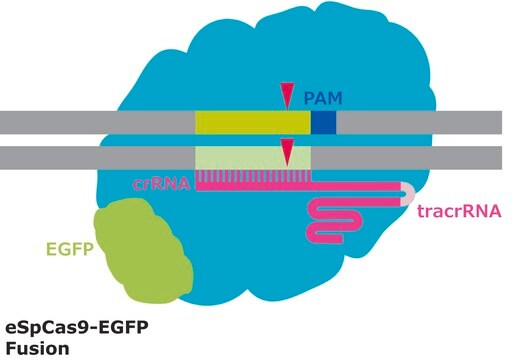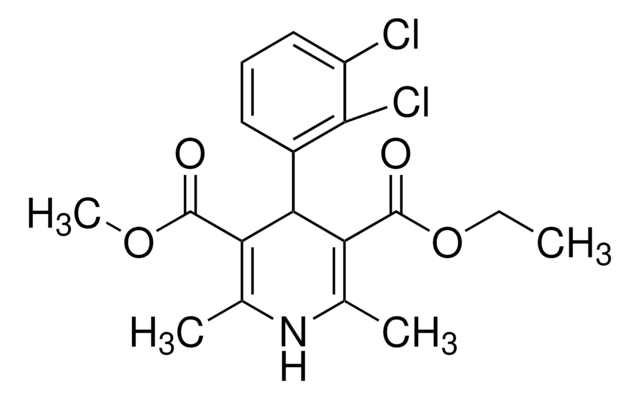P6487
Anti-Purinergic Receptor P2Y1 antibody produced in rabbit
affinity isolated antibody, lyophilized powder
Sign Into View Organizational & Contract Pricing
All Photos(2)
About This Item
UNSPSC Code:
12352203
NACRES:
NA.41
Recommended Products
biological source
rabbit
Quality Level
conjugate
unconjugated
antibody form
affinity isolated antibody
antibody product type
primary antibodies
clone
polyclonal
form
lyophilized powder
species reactivity
human, rat
technique(s)
immunohistochemistry: suitable
western blot: suitable
UniProt accession no.
storage temp.
−20°C
target post-translational modification
unmodified
Gene Information
human ... P2RY1(5028)
rat ... P2ry1(25265)
Related Categories
General description
Purinergic Receptor P2Y1 is a member of G protein-coupled receptors. The P2Y1 gene is mapped to human chromosome 3q25.2. It is present in the heart, blood vessels, prostate, testis, ovary, and neural tissue.
Immunogen
synthetic peptide corresponding to residues 242-258 of rat or human P2Y1.
Application
Anti-Purinergic Receptor P2Y1 antibody produced in rabbit has been used in western blotting1:200 and immunohistochemistry at a dilution of 1:50.
Biochem/physiol Actions
Purinergic Receptor P2Y1 acts as a receptor for extracellular ATP and ADP. It is essential for ADP-induced platelet activation, aggregation, and thrombosis. P2Y1 also participates in endothelial cell-based nucleotide-induced relaxation and in calcium mobilization. It serves as a potential target for the generation of new antiplatelet compounds and anti-inflammatory strategies.
Physical form
Lyophilized from phosphate buffered saline, pH 7.4, 1% bovine serum albumin and 0.05% sodium azide.
Disclaimer
Unless otherwise stated in our catalog or other company documentation accompanying the product(s), our products are intended for research use only and are not to be used for any other purpose, which includes but is not limited to, unauthorized commercial uses, in vitro diagnostic uses, ex vivo or in vivo therapeutic uses or any type of consumption or application to humans or animals.
Not finding the right product?
Try our Product Selector Tool.
Choose from one of the most recent versions:
Already Own This Product?
Find documentation for the products that you have recently purchased in the Document Library.
Autocrine activation of P2Y1 receptors couples Ca (2+) influx to Ca (2+) release in human pancreatic beta cells.
Khan S, Yan-Do R, Duong E, et al.
Diabetologia, 57(12), 2535-2545 (2014)
[Fatigue fracture of bone (author's transl)].
J Sebek et al.
Acta chirurgiae orthopaedicae et traumatologiae Cechoslovaca, 43(4), 364-366 (1976-08-01)
Shara Khan et al.
Diabetologia, 57(12), 2535-2545 (2014-09-12)
There is evidence that ATP acts as an autocrine signal in beta cells but the receptors and pathways involved are incompletely understood. Here we investigate the receptor subtype(s) and mechanism(s) mediating the effects of ATP on human beta cells. We
F R Seiler et al.
Developments in biological standardization, 44, 153-163 (1979-01-01)
Unspecifically induced activation of Complement (C) in solution can be caused either by denatured Ig molecules and by polymeric aggregates of same or more specifically by antigen-antibody complexes. As a quality criteria, e.g. for i.v.-IgG preparations, it is agreed by
Milka Koupenova et al.
Frontiers in pharmacology, 9, 37-37 (2018-02-15)
Platelets are small anucleated cells present only in mammals. Platelets mediate intravascular hemostatic balance, prevent interstitial bleeding, and have a major role in thrombosis. Activation of platelet purinergic receptors is instrumental in initiation of hemostasis and formation of the hemostatic
Our team of scientists has experience in all areas of research including Life Science, Material Science, Chemical Synthesis, Chromatography, Analytical and many others.
Contact Technical Service





